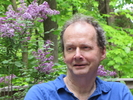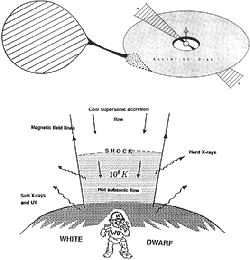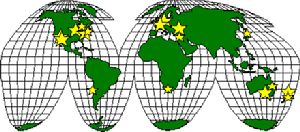|
|
| Joe Patterson |
|
 |
| electronic mail: |
|
jop@astro.columbia.edu |
| office: |
|
1422 Pupin Physics Laboratories |
| telephone: |
|
+1 (212) 854 - 3276 |
| facsimile: |
|
+1 (212) 854 - 8121 |
|
| Lecture Courses |
|
| |
Spring 2023
Astr 1610: Theories of the Universe, From Babylon to the Big Bang
Mondays & Wednesdays, 6:10pm - 7:25pm, Pupin 329
Syllabus: 3 pages (1.0MB PDF)
Book: click here
Course description:
|
Milestones in the science of cosmology over the past 6000 years. Skylore
and observation in ancient cultures. The twin revolutions of the Greeks:
Pythagoras and Ptolemy; and Aristotle, Aquinas, and the Great Chain of
Being. The "scientific revolution": the impersonal and deterministic
world-order of Newton, Laplace, and Kelvin. The erosion of that
world-order by mathematics and experiment in the 20th century
(relativity, quantum physics, dark matter, and the expanding universe).
Today's searches for a new grand order in the Universe, which can cope -
or maybe not - with these blows to yesterday's comfortable wisdom.
|
|
| |
Other select past courses
Autumn 2015- Astr 2001: Introduction to Astrophysics, I [Syllabus: 3 pages (1.3MB PDF)]
Spring 2015- Astr 1404: Stars, Galaxies, and Cosmology [Syllabus: 3 pages (1.7MB PDF)]
|
| Research Interests |
|
 Most stars are found in binaries, yet the theory of stellar evolution is almost exclusively about
single stars. It is high time to remedy that oversight! Towards that end, one of my major research
goals is to understand the structure and evolution of cataclysmic variables, especially the oldest
ones (the WZ Sge and AM CVn stars) where both components have evolved
to degenerate states.
Most stars are found in binaries, yet the theory of stellar evolution is almost exclusively about
single stars. It is high time to remedy that oversight! Towards that end, one of my major research
goals is to understand the structure and evolution of cataclysmic variables, especially the oldest
ones (the WZ Sge and AM CVn stars) where both components have evolved
to degenerate states.

I have also been working for 20 years to understand the structure of DQ
Her stars, often called intermediate polars in those parts of the world where confusion and
error still reign (particularly east of the mid-Atlantic ridge). Look, there's one at the right.
Click on the 1994 review paper, and wallow in this subject a bit.
Until recently my observational activity was ~60% from the National Observatories, maybe 30% from
various X-ray telescopes, 10% from other satellites. But in ~1991 we formed the Center for Backyard (neé Basement) Astrophysics,
a network of primarily amateur astronomers spanning the globe and collaborating on observation of
variable stars. This has provided a powerful tool to study periodic processes in these stars, free
from aliasing (because of the global distribution) and free from problems with weather (it's always
clear somewhere).
 It also proved timely, because it was just about then that NOAO decided to kick
us out (they don't like 15th mag stars anymore). Click on the CBA, and read all about us. I'm
particularly interested in precession phenomena in accretion disks, which are manifested as
superhumps.
It also proved timely, because it was just about then that NOAO decided to kick
us out (they don't like 15th mag stars anymore). Click on the CBA, and read all about us. I'm
particularly interested in precession phenomena in accretion disks, which are manifested as
superhumps.
|
| Background |
|
| 2014 |
|
Naming Award, Asteroid 8794, International Astronomical Union |
| 1996 - present |
|
Professor, Department of Astronomy, Columbia University |
| 2002 - 2003 |
|
250th Anniversary Distinguished Teaching Professor, Princeton University |
| 1997 |
|
Presidential Teaching Award, Columbia University |
| 1988 - 1996 |
|
Associate Professor, Department of Astronomy, Columbia University |
| 1989 - 1991 |
|
Visiting Professor, Department of Astronomy, University of California at Los Angeles |
| 1983 - 1988 |
|
Assistant Professor, Department of Astronomy, Columbia University |
| 1980 - 1983 |
|
Research Scientist, Smithsonian Astrophysical Observatory |
| 1979 - 1980 |
|
Postdoctoral Scholar, University of Michigan |
| 1979 |
|
Ph.D. (Astronomy), University of Texas |
| 1971 - 1974 |
|
Founder and Builder, Camp Uraniborg |
| 1969 - 1972 |
|
Physics Teacher, Walden and Trinity Schools |
| 1969 |
|
A.B. (Magna Cum Laude, History of Science), Harvard University |
|